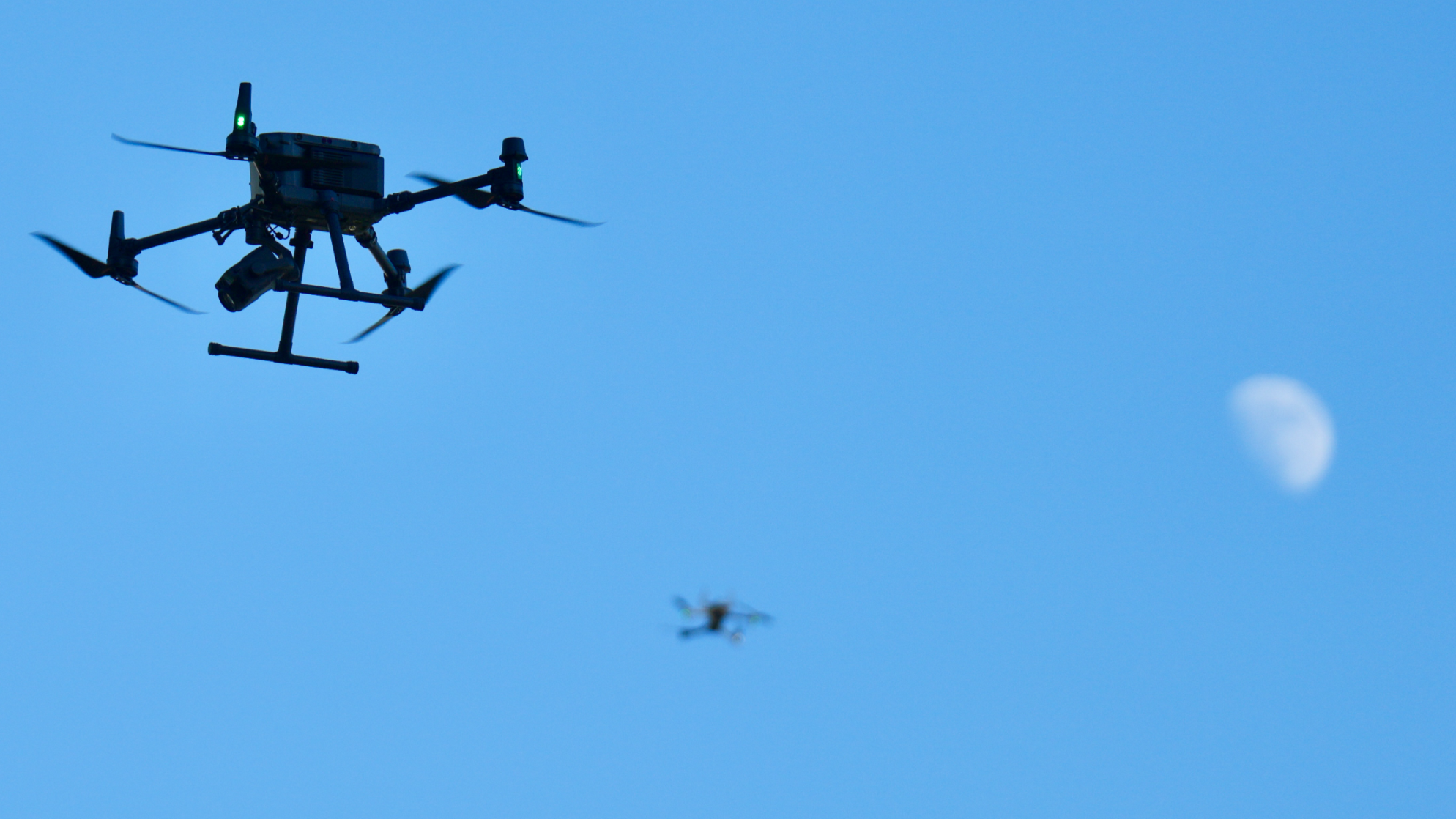
Hong Kong took another step in its drive to become an Asia-Pacific center for innovative low-altitude use on Thursday with the opening of the Low-Altitude Economy Application Exhibition Hub at Cyberport, the city’s digital technology incubator.
The facility has cutting-edge technologies and solutions that could transform sectors such as infrastructure maintenance, emergency rescue, and power grid management, all key areas of the Hong Kong Special Administrative Region’s efforts to build a smarter city.
R2C2, a firm that specializes in developing robot automation and collaboration platforms, displayed a rescue solution that combines artificial intelligence, high-resolution thermal imaging cameras, and robot systems. These drones can detect missing people in dense forests or other low-visibility conditions. Once a target is identified, they share real-time data with robot dogs that are capable of navigating unfavorable environments like rugged terrain and guiding rescue teams to the scene quickly.
READ MORE: Collaboration forged to promote HK’s low-altitude economy
CLP Power, one of Hong Kong’s two electricity suppliers, has utilized small unmanned aircraft for operations that go beyond lines of sight to inspect transmission towers and overhead power lines — a critical task given its network of more than 17,000 kilometers of transmission and high-voltage distribution infrastructure.
According to CLP, the introduction of drone technology has increased inspection efficiency nearly fourfold, while slashing personnel requirements and transportation costs. The company is planning to expand the use of technology to underground and submarine cables.
Startup Alpha AI revealed an innovative approach to infrastructure maintenance. By deploying drones to capture high-definition images of buildings, slopes, and other structures, it leverages AI to accurately identify any damage. This method offers an efficient and cost-effective solution to a traditionally labor-intensive process, the company said.

Hong Kong’s low-altitude economy is progressing quickly, Deputy Financial Secretary Michael Wong Wai-lun said. Since the SAR government announced the first batch of 38 pilot projects under the regulatory sandbox in March, 17 projects had entered operation by late September, he said, adding that this number is expected to climb to 28 by the end of October.
Elizabeth Quat Pui-fan, founding president of the Greater Bay Area Low Altitude Economy Alliance, said she believes low-altitude economic activities, such as drone logistics and aerial inspections, have become key parts of smart cities globally, and demand for these services is “soaring”.
“Hong Kong is fully committed to the development of the low-altitude economic activities,” Quat, who is also a Hong Kong lawmaker, said the global market is forecast to be worth $1 trillion by 2040 and $9 trillion by 2050.

Hong Kong’s first Drone Sports Centre, a designated venue for drone flight training and competitions, opened at Cyberport on Thursday.
In his latest Policy Address, Chief Executive John Lee Ka-chiu reaffirmed the SAR government’s support for the burgeoning sector. Lee announced the formulation of an action plan on developing the low-altitude economy, which will include measures such as improving civil aviation legislation and regulatory frameworks, as well as advancing infrastructure facilities like vertiports — sites for electrically powered aircraft taking off and landing vertically — air route networks, and three-dimensional spatial data systems.
READ MORE: HKU, alliance team up to help boost low-altitude economy
Lee also outlined plans to launch the advanced low-altitude economy “Regulatory Sandbox X” pilot projects to cover application scenarios that are technically more complex, including cross-boundary routes and low-altitude aircraft carrying passengers.
Contact the writer at irisli@chinadailyhk.com


